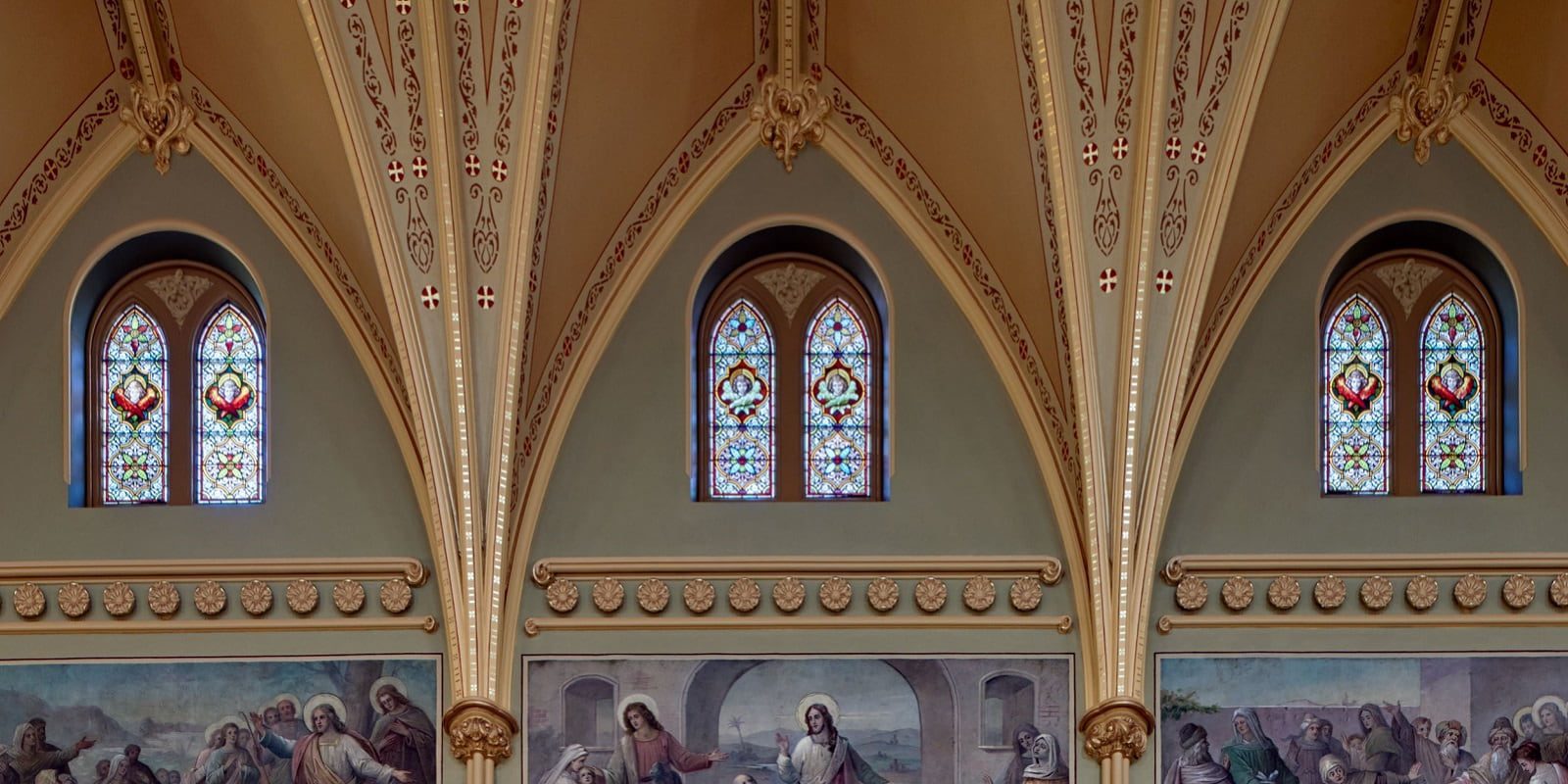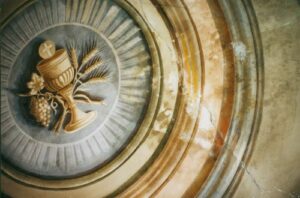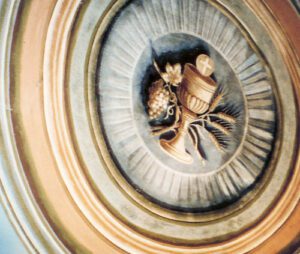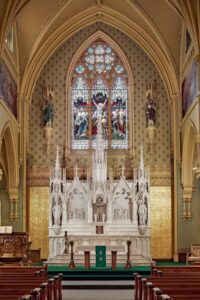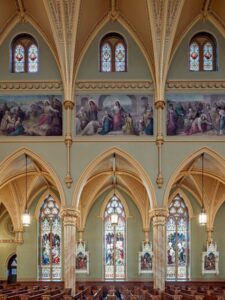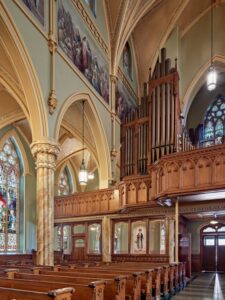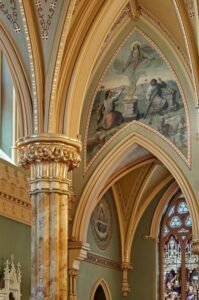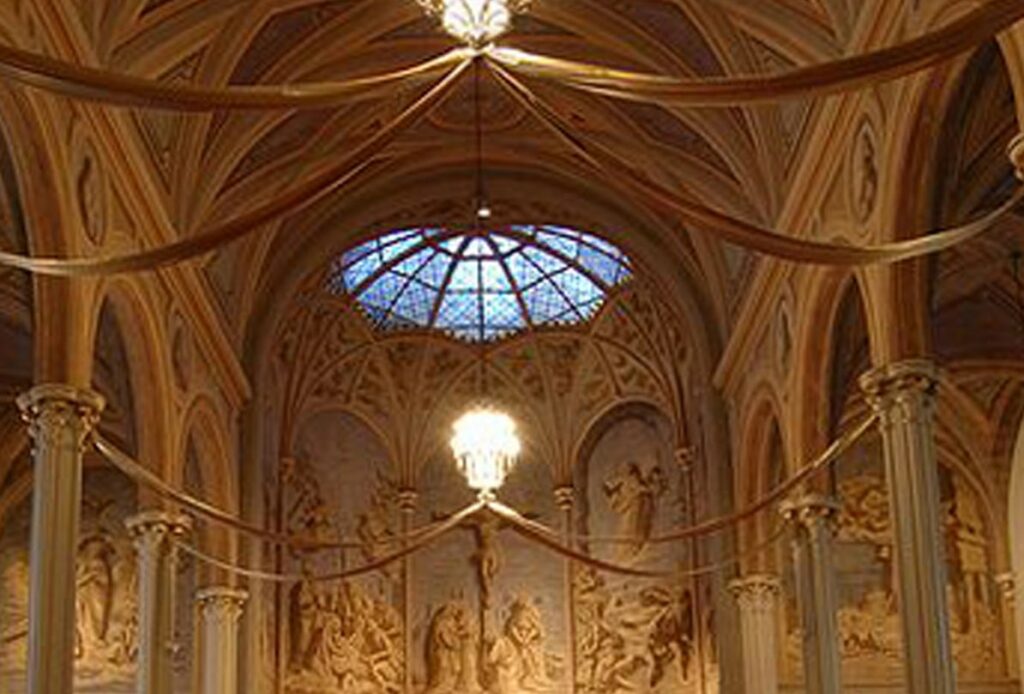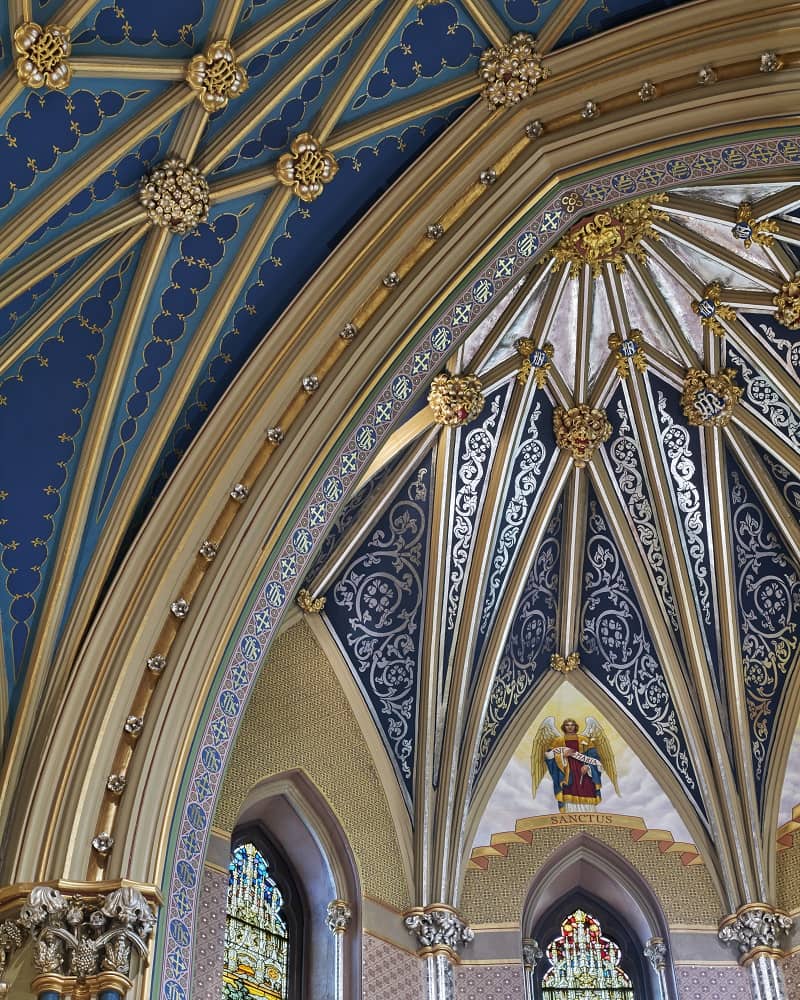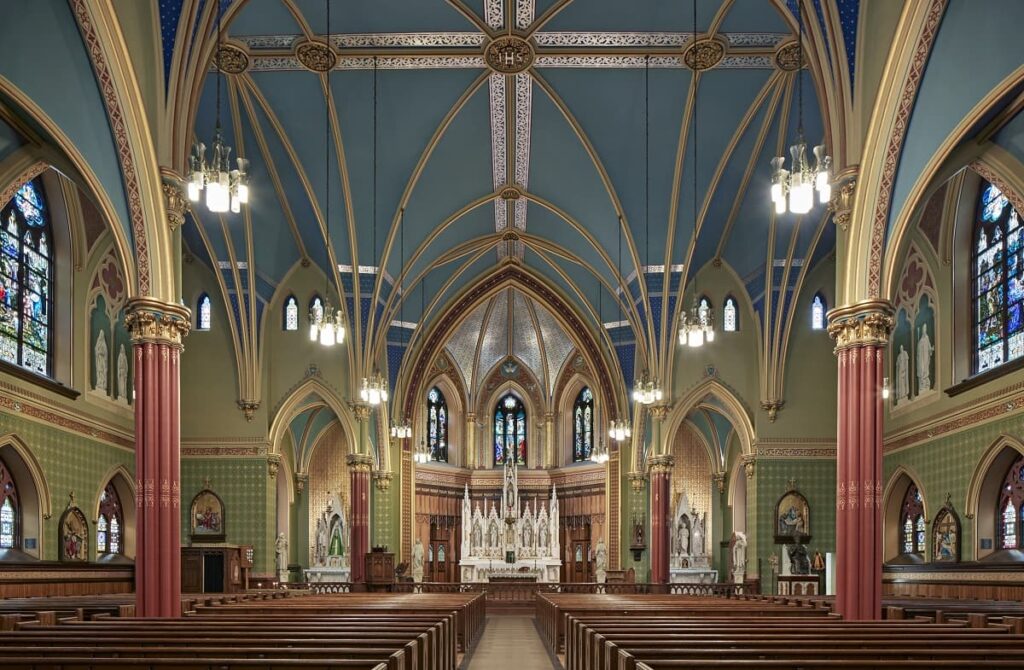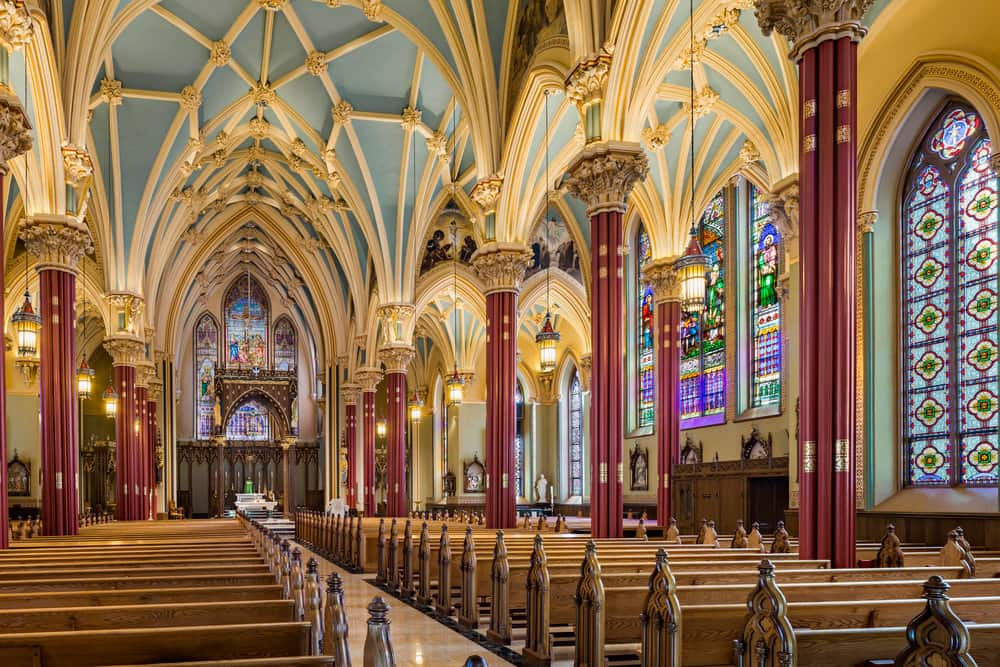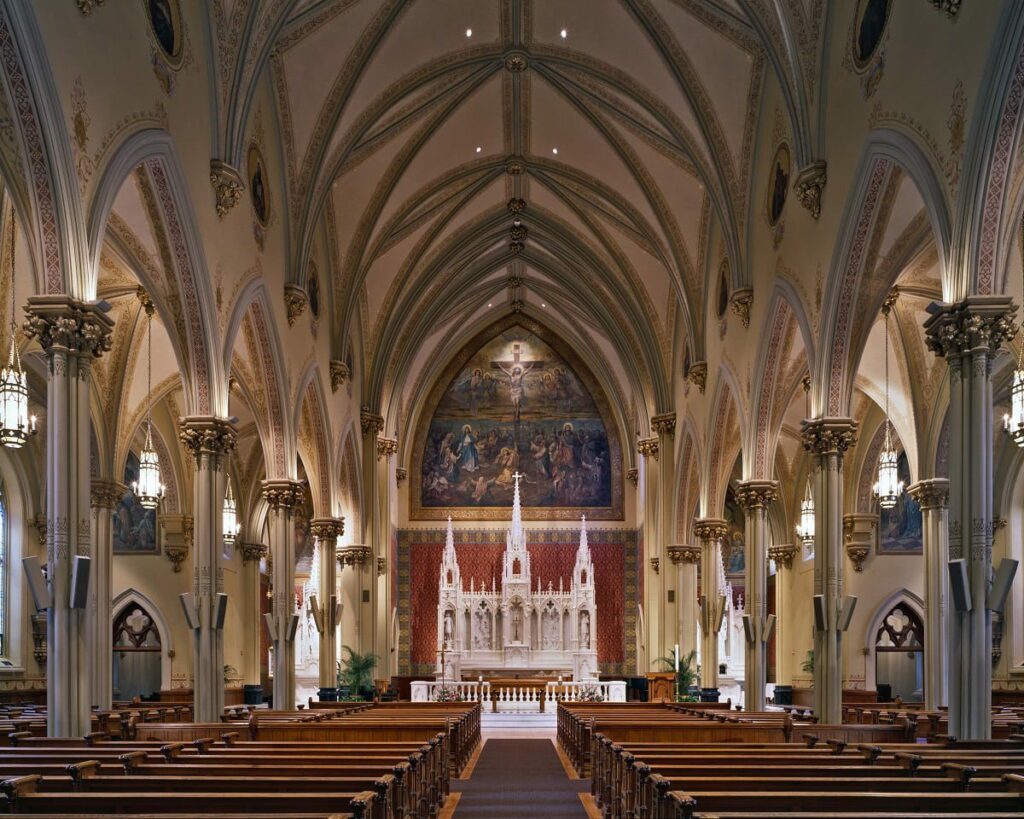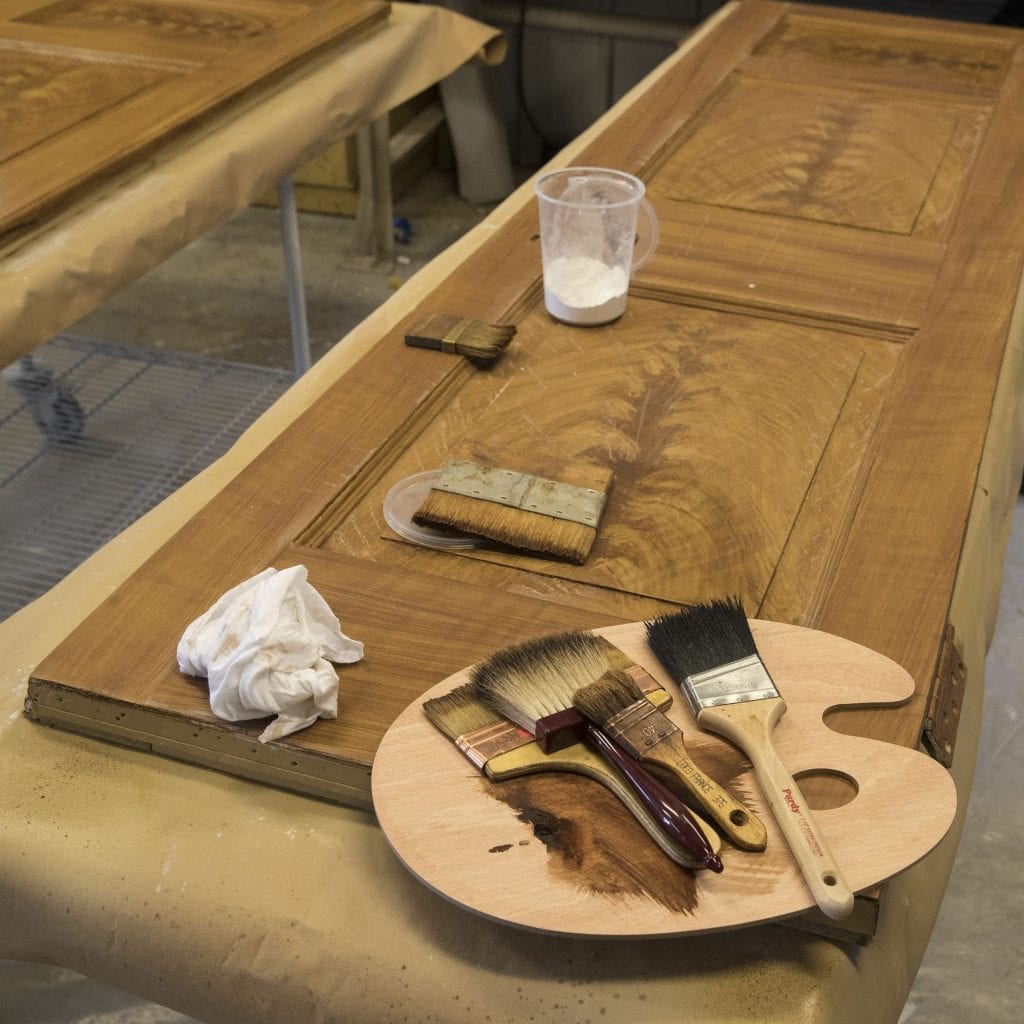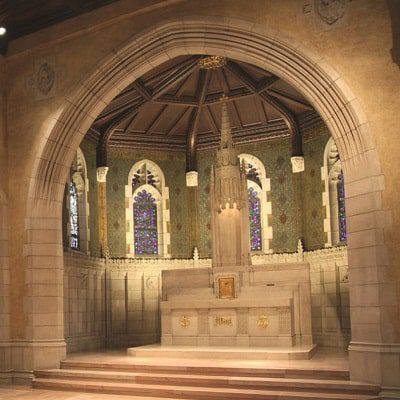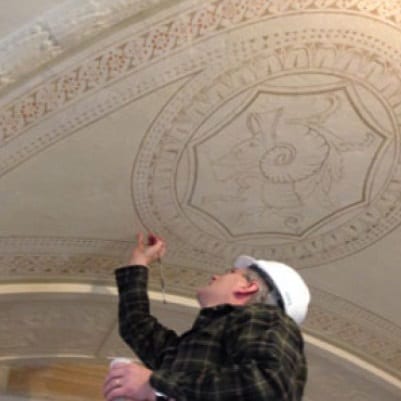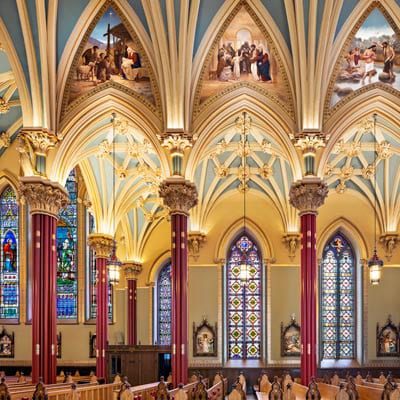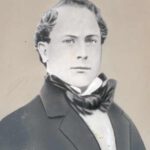 In 1842 upon arriving in America from Ireland, twenty-five-year-old Patrick Keely settled in Brooklyn, New York. He began work as a carpenter and went on to become one of the most prolific church architects in American history. At that time, with Catholicism more generally accepted in society and the great influx of Catholic immigrants from Europe, there was a high demand for larger, more beautiful Catholic Churches.
In 1842 upon arriving in America from Ireland, twenty-five-year-old Patrick Keely settled in Brooklyn, New York. He began work as a carpenter and went on to become one of the most prolific church architects in American history. At that time, with Catholicism more generally accepted in society and the great influx of Catholic immigrants from Europe, there was a high demand for larger, more beautiful Catholic Churches.
Unlike the architectural process of today, only a few architectural drawings were developed by the architect for the construction of a building, even one as complex as a church. The architect focused primarily on the overall design, proportion, and aesthetic of the building. Once the concept drawings were complete, a master builder would then develop the detailed drawings and specifications necessary to carry out the work. As a skilled craftsman in the building arts, Keely quickly gained notoriety as a competent builder. Through his work as a builder and life as a devout Catholic, Keely had become acquainted with the local clergy. When Rev. Sylvester Malone, a Brooklyn priest of Keely’s age, decided to build a church on newly purchased land in Williamsburg, Brooklyn; he turned to Keely for direction.
Malone and Keely collaborated on the design of a new St. Mary Church in the Gothic style. Initially, Bishop John Hughes rejected the plans due to cost. However, the determined pastor persisted and the bishop eventually relented. The new church was completed in 1847 and dedicated to Saints Peter and Paul. The praise for the new construction distributed Keely’s acclaim through all five boroughs and into New England. With Gothic revival architecture in popular favor, Keely’s honest business dealings, and his connections with stained glass firms, builders, and talented artists, Keely would remain in high demand for ecclesiastical design in the Tristate, New England, and before long, Mid-Western United States.
Despite never receiving formal architectural training, Keely designed more than 600 churches in America and Canada. He was known as an honest man, who charged his clients little more than material costs. The Notre Dame Scholastic magazine noted, “Mr. Keely is a fervent and practical Catholic who has done more for Christian architecture than any man in the country.”
Through Keely’s influence, some of the most talented artists and craftsmen of the time were brought together on church commissions. In many Keely churches, one may find the work of marble carver Josef Sibbel, and German fine artist, Daniel Muller, among others. Canning was responsible for conserving Muller’s polychromatic, illusionistic architectural paintings (trompe l’oeil) in the ceiling and walls as well as the grisaille triptych paintings in the sanctuary and side altars in St. Francis Xavier in West Virginia.
John Canning, who worked directly on the project explained, “The entire church was originally executed using distemper paint directly on the plaster substrate. This is one the best examples of illusionistic painting in the United States. Keely did not include any architectural mouldings whatsover when he designed St. Francis Xavier. It was deliberately designed without any mouldings or details with the view that Daniel Muller would create them through his illusionistic paintings.”
Canning conserved this illusionistic painting by Muller on the ceiling in the Keely-designed church, St. Francis Xavier in WV.
On many of his ecclesiastical designs, Keely contributed to his ability as a carpenter. Keely’s handiwork may be viewed in the wood-carved ceiling of St. Mary – St. Catherine of Siena Church in Charlestown, MA.
Canning restored the interior decoration to Keely’s original specifications and our colleague, Gianfranco Pocobene carried out the fine art conservation for Canning. Our design contribution was simulated onyx marble in the sanctuary to complement the onyx marble altars. Just this month, Canning has been awarded the 2023 Bulfinch Award for Historic Preservation for this very project.
One of Canning’s principals, David Riccio says, “Keely was so dedicated to the construction of this church that he himself fabricated and physically assembled some of the wooden ceiling demonstrating the importance this commission held for him. To be able to beautify his Gothic Revival designs from the 1880s with the elaborate hammer beams and ornamental wood ceilings was so satisfying from a historic preservation standpoint.”
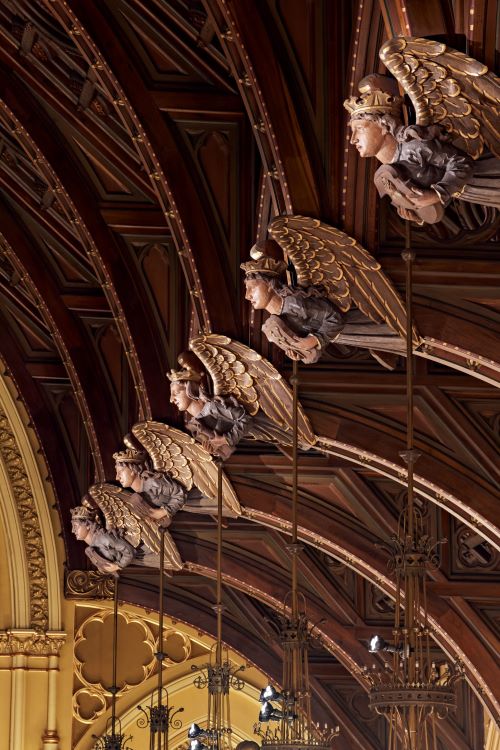
Detail of wood-carved ceiling at Keely’s St. Mary – St. Catherine of Siena Church in Charleston, MA.
St. Patrick Church in Lowell, Mass is a unique example of preserved Keely design in totality.
The comprehensive historic restoration and conservation of St. Patrick Parish took more than a year and required the full breadth of Canning’s services, experience, and skills. The scope of the project included historic paint analysis, plaster conditions analysis, renderings for new mural and decorative painting scheme, architectural gilding and trompe l’oeil were all executed by Canning during this lengthy restoration project.
During his career, Keely formulated different partnerships with other architects, most notably that with James Murphy. Not only did Keely and Murphy join together in business ventures, but the two also married sisters. Murphy garnered notable success as an architect in his own right designing many beautiful churches. Keely built a good portion of his business through family connections. In addition to working with Murphy, Keely collaborated with his wife’s brother James Farmer, training his two sons Charles and John J., as well as his son-in-law, Thomas Houghton. It was stated upon Keely’s reception of the second annual Laetare Award in 1884 that he had been successful in “…changing the style of ecclesiastical structures and modified architectural taste in this country.”
This influence on the architects and craftsmen Keely worked with as well as the culture in general has come to be known as the “Keely School.” Canning has had the privilege to work on several James Murphy churches, St. Mary Church in Norwalk, CT, Our Lady Help of Christians in Newton, MA, the Basilica of St. John the Evangelist in Stamford, CT, Cathedral of St. Patrick, Norwich, CT, and St. Mary Church New Haven, CT.
He did not die a rich man and it was noted by Father Malone, the priest who gave him his first architectural commission, that Keely “did not have a coarse fiber in his being.” At Keely’s funeral, Father Malone lamented the death of his friend in a moving eulogy in which he stated:
“We would be unworthy of the Celtic race, unworthy of benediction, were we to allow the memory of such a man to perish. While he is gone, these structures still remain, monuments to the goodness, patience, and perseverance of this man.”
Patrick Keely was a church architect but he appeared to view his work with great purpose, likening it to a vocation in the service of his God and his fellow man. To this day, hundreds of street corners and faithful congregations are blessed by the creations of Patrick Keely and the architects of the Keely School.

